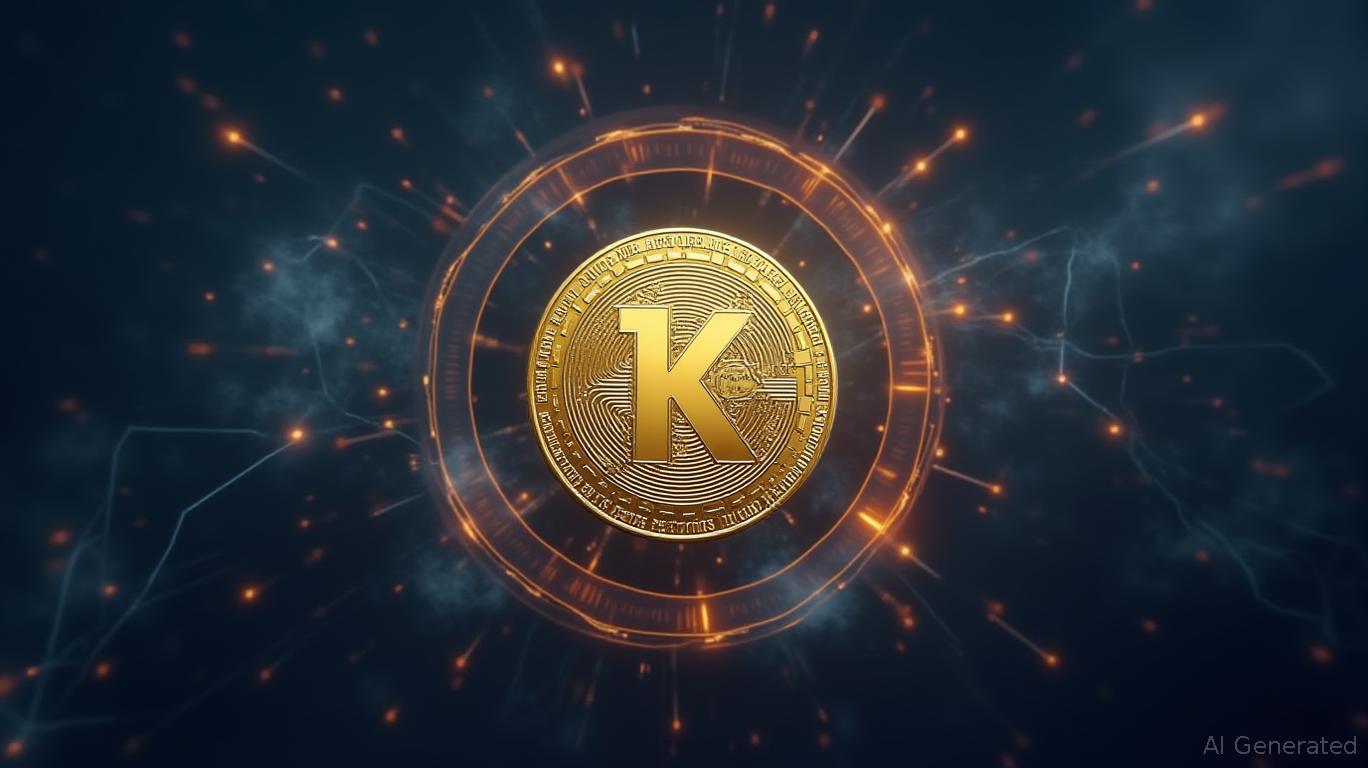Regulatory Concerns Intensify with the Introduction of South Korea's KRW1 Stablecoin into Arc's International Network
- Circle's Arc blockchain, designed as an "economic operating system," offers sub-second finality and USDC-based fees to streamline global finance. - South Korea's BDACS plans to deploy KRW1, a won-pegged stablecoin on Arc's testnet, bridging Korean markets to global stablecoin networks. - Arc's testnet has attracted 100+ institutions including BlackRock and Visa, aiming to redefine cross-border payments and asset tokenization. - Regulatory debates persist as South Korea's Bank of Korea proposes restrictin
Jeremy Allaire, CEO of Circle, has introduced the company's new Arc blockchain as "an economic operating system for the internet." This platform aims to modernize global financial systems by offering stable transaction fees, near-instant settlement, and compatibility with fiat-linked stablecoins. The concept is gaining momentum, with South Korean crypto custodian BDACS revealing plans to launch KRW1, a won-pegged stablecoin, on Arc's testnet. This move represents a notable advancement in bringing Korean financial technology into the worldwide stablecoin landscape, as reported by a
Since its testnet debut on October 28, 2025, Arc has drawn participation from over 100 organizations, including major players like BlackRock, Visa, Goldman Sachs, and State Street. This highlights Arc's potential to transform international payments and capital markets. By utilizing

The KRW1 stablecoin from BDACS, which is fully backed by the South Korean won, is intended to help Korean companies connect with global stablecoin platforms. The Busan-based custodian has entered into a memorandum of understanding (MOU) with
Arc is gaining traction due to its flexibility in serving both regulated and emerging markets. Stablecoin issuers from countries such as Japan, Brazil, Mexico, and the Philippines are already piloting their tokens on Arc, with KRW1 joining these efforts. This supports Allaire's claim that Arc is built to link "every local market to the global economy," a statement backed by its partnerships with leading financial firms and fintech companies, as outlined in the Circle press release.
Nonetheless, regulatory discussions continue. Sangmin Seo, chair of the Kaia DLT Foundation, criticized the Bank of Korea's (BOK) suggestion to limit issuance of won-backed stablecoins to banks, calling the idea "illogical." Seo argued for transparent regulations that apply to all issuers, whether banks or not, to encourage innovation while managing risks, as reported by Coinotag. The BOK maintains that allowing only banks to issue such stablecoins would better address anti-money laundering (AML) concerns under current laws.
Market trends demonstrate Arc's expanding role: stablecoins now have a combined market capitalization of $170 billion, with USDC alone exceeding $72 billion in circulation. Circle's recent collaborations, such as with ClearBank for European stablecoin transactions and Hyperliquid for DeFi integration, further strengthen its network, according to an
Allaire sees Arc eventually becoming a "shared, neutral layer of economic infrastructure" managed by a decentralized network of stakeholders. While Circle currently oversees the platform, the long-term vision is to shift toward community-led governance, keeping Arc open and responsive to global financial demands, as stated in the company's press release.
As the rollout of KRW1 continues, industry observers will be watching how regulations and market forces influence the adoption of stablecoins. For now, Arc's testnet is gaining momentum, supported by institutional involvement and strategic alliances, positioning it as a key force in the evolution of onchain finance.
---
Disclaimer: The content of this article solely reflects the author's opinion and does not represent the platform in any capacity. This article is not intended to serve as a reference for making investment decisions.
You may also like
AMTD's Merger Drives Revenue Growth, While TGE Faces Significant Debt Risk
- TGE's stock fell 39.88% amid liquidity issues and $405M liabilities, despite $574.69M in assets. - AMTD's TGE merger drove 1,085.9% revenue surge to $73.2M, but faces $6.1M finance costs and rising debt. - Analysts highlight AMTD's $899.1M asset base and luxury hospitality growth, yet warn of TGE's debt sustainability risks. - Market awaits AMTD's ability to stabilize TGE's liabilities while maintaining its 80-85% ammonia utilization targets.
Hyperliquid News Today: Malaysia's Approach to Blockchain: BNM Focuses on Real Value Rather Than Hype in Tokenization Efforts
- Bank Negara Malaysia (BNM) launched a 3-year RWA tokenization roadmap to position Malaysia as a blockchain finance leader in Asia. - The plan emphasizes phased DLT pilots in SME financing, Islamic banking, and cross-border trade, prioritizing measurable value over hype. - Projects must align with Shariah and regulatory frameworks, with a Digital Asset Innovation Hub testing use cases by 2027. - BNM collaborates with regulators and industry players to address challenges, aiming to reshape financial infras

Dogecoin News Update: As the Crypto Market Evolves, Investors Focus on Practical Use Rather Than Hype
- Crypto investors increasingly favor utility-driven tokens like Remittix (RTX) over hype-focused projects like Dogecoin (DOGE) and Shiba Inu (SHIB). - Dogecoin's 4.19% 24-hour price drop highlights its limitations compared to Remittix's $27.7M funding and instant crypto-to-fiat payment solutions. - Remittix's PayFi protocol, supported by CertiK audits and listings on BitMart/LBank, addresses cross-border payment gaps through 30+ country operations. - XRP and XLM face competition from Remittix as instituti

Bitcoin Updates: Surge in BTC Raises Questions—Is It Volatility or a Market Adjustment?
- Short-term Bitcoin holders transferred 31,700 BTC ($634M) to exchanges, signaling potential volatility amid regulatory uncertainty and Fed policy speculation. - Analysts link the surge to speculative positioning, with 40% of moved BTC staked or locked in protocols, impacting liquidity metrics. - Major exchanges reported 12–15% higher short-term deposit volumes, as traders hedge against SEC enforcement risks and macroeconomic shifts. - Market strategists warn such movements often precede corrections, thou